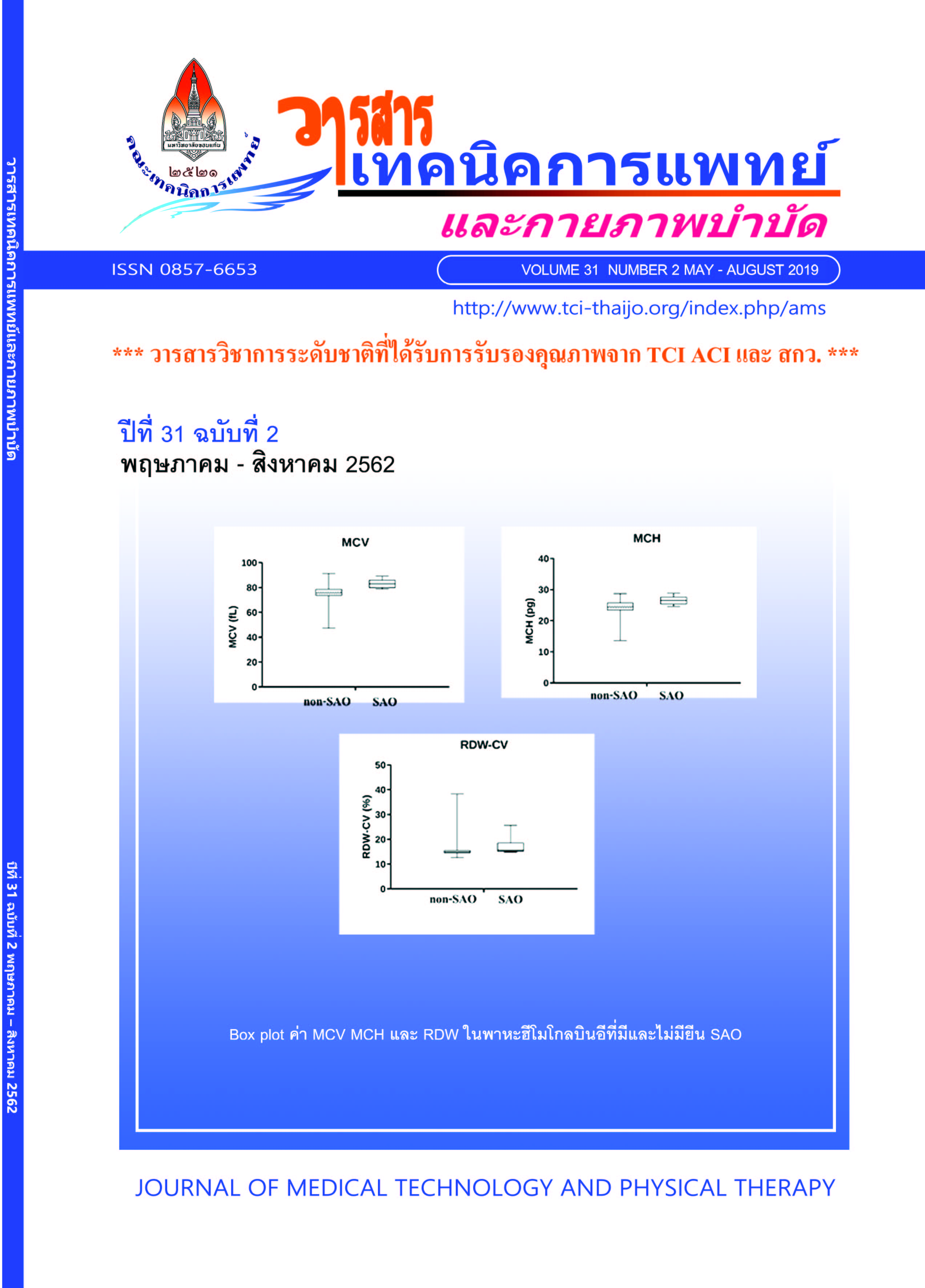The prevalence of carbapenemase-producing Enterobacteriaceae in Sapphasithiprasong Hospital
Main Article Content
Abstract
Family Enterobacteriaceae is a large family of Gram-negative bacilli bacteria. Several members in this family are enteric bacteria living in the intestines of animal and some members are pathogens. These bacterial can cause urinary tract infection, sepsis, diarrhea, and multi-system infection. There are several reports of the drug resistant strains in enteric bacteria. The aim of this study was to investigate the prevalence of carbapenemase-resistant Enterobacteriaceae (CRE) and to detect carbapenemase-producing Enterobacteriaceae (CPE) by phenotypic tests recommended by CLSI. A total of 345 isolates of Enterobacteriaceae from patients admitted to Sapphasithiprasong Hospital between September 2017–September 2018 were included in this study. CRE were 157 isolates (45.50%) by tested ertapenem disk follow CLISI criteria. Using CPE screening disk diffusion method recommended by EUCAST, 233 isolates (67.53%) were CPE screening positive. They were further detected for carbapenemase production by phenotypic tests and determined for their carbapenem MICs. Of the 233 isolates, 120 (51.50%) isolates were Modified Hodge test (MHT)-positive and 135 (57.94%) isolates were modified carbapenem inactivation method (mCIM)-positive. The range of carbapenem MIC for the CPE isolates was 0.125-128 µg/ml. Carbapenem MICs interpreted using CLSI criteria presented resistance to ertapenem, imipenem and meropenem in 122, 51 and 87 isolates respectively. The prevalence of CPE was 39.13%.
Key words: , , , , ,

